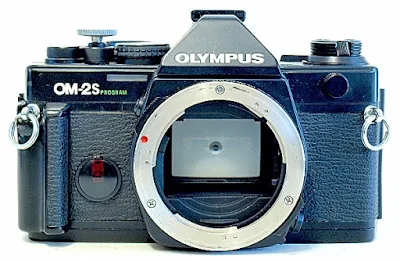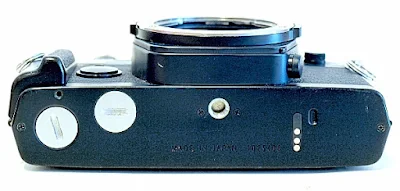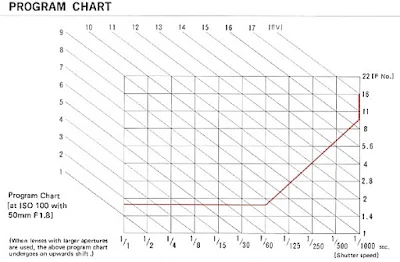The system expanded with the addition of the semi-automatic OM-2 and OM-2n, the introduction of the 'professional' OM-3 and OM-3Ti, and OM-4 and OM-4Ti.
The system is supported by a wide range of Zuiko-branded lenses, as well as a generous selection of accessories.
Launched in 1984 as a rework of the Olympus OM-2n, the OM-2S / OM-2 SP (Spot/Program outside the US) is somewhat of a dichotomy.
The camera is was actually closer to the OM-3 and OM-4 than to the OM-2n, sharing not only the production line technology of the OM-3 and OM-4, but also the shutter mechanism of the OM-4, adapted without the 1/2000 second top speed while retaining the 1/60 second mechanical speed for use when batteries were depleted, and B.
Olympus OM-2s Program Review || The Underrated Brother
WHATS GUCCIA Y'ALL,Today we take a look at the Olympus Om-2s Program and the different features the camera has to offer. Long story short this camera is an absolute BEAST and it's often overlooked by its other OM brothers. Something about the matte black paint gets me every time and the simple and intuitive design really adds to the overall package.
With more to offer in both design and engineering, a fixed hot-shoe, dual metering system, three exposure modes, and a basic level of weather-sealing as new features, the OM-2S / OM-2 Spot Program looks like it would surely be a winner, doesn't it?
Design and Build
The Olympus OM-2S / OM-2 Spot Program is an aperture-priority AE (Automatic Exposure) 35mm film SLR camera fitted with an electronically controlled cloth focal-plane shutter with a dual metering system, and Programmed AE, Aperture-Priority AE, and Manual/Spot Metering exposure modes.
The camera has an electronically controlled shutter speed range of about 1 minute to 1/1000 second in its autoexposure modes, and from 1 to 1/1000 second for manual exposure. Exposure compensation is at +2EV in 1/3 steps, film ISO rating is from 12 to 3200, and self-timer delay is 12 seconds.
The OM-2S / OM-2 SP (Spot Program) is compatible with all of OM's system focusing screens, accessories (except for the flash shoe attachments), and the Autowinder 1 or 2, which powers the camera to 3.5 frames per second. The body is also fitted with a fixed hot shoe and a plug for the TTL flash connector cable.
The rewind release button is located on the top plate between the ASA setting dial and the film advance lever, an aid to the better execution of multiple exposures. Film rewind is manual.
Basic Camera Features
The Olympus OM-2S / OM-2 SP (Spot/Program) was available only in elegant black and came in a very compact body form, with easy-to-use functions and controls.
The front of the camera is rather plain, on the left of the lens mount housing is the Self-Timer/Electric Beeper unit, and towards the top, on the front of the top plate, the Finder Light Window, with the Viewfinder Illumination Button beside it, on the vertical of the lens mount housing, The Grip-Lock mount is located on the side of the front panel.
On the right, toward the lower right corner of the lens mount housing, is the shutter ring release lock which will let you move the shutter speed ring over to the 1/60 second mechanical speed, and B. Close to the lever, on the vertical of the housing, is the Flash Synchro socket, and towards the top, on the front of the top plate, the TTL Auto Cord socket.
Standard (and unique to the OM System) on all OM bodies, except for the OM-10 and the Cosina-built OM-2000, is the shutter speed ring, which is located at the base of the lens mount housing.
On the left of the pentaprism, now with a built-in hot shoe, is the rewind crank integrated with a longish mode selector lever with selections for Battery Check, Programmed AE Mode [PROGRAM], Aperture-Priority Mode [AUTO], and Manual/Spot exposure setting.
To the right is the combined film ISO and Exposure Compensation selector dial, shutter release, film advance crank, film counter window, and, surprisingly, a new location for the rewind release lock.
The film back is a hinge type, comes with a film tab holder, and is interchangeable with Recordata Backs and 250 Film Back. The Battery Chamber (with cover) is on the bottom plate, together with the Motor Coupling Socket (with cover), Motor Guide pinhole, Tripod Socket, and Motor Coupling Terminals.
Metering Modes
The dual metering mode is activated automatically:
- Off-The-Film Direct Light Metering - The term Olympus is used to explain the center-weighted, averaged light metering system that is measured off the film surface itself. The system, the first in the world, adapts itself to changes in the lighting during the actual exposure.
- Spot Metering - The spot metering mode measures the light intensity with which you set the shutter/aperture combination before you reframe the subject to grab the image. This system ensures that the values you set do not change even if you reframe or re-focus the image.
Exposure Modes
As mentioned, the OM-2S / OM-2 SP had three operational exposure modes:<//p>
- Programmed Automatic Exposure on 'OTF' Direct Light Metering - Activated in 'Program' mode, the camera sets the aperture/shutter speed combination automatically, and the exposure reading is taken off the film plane.
- Aperture Preferred Automatic Exposure on 'OTF' Direct Light Metering - Activated on 'Auto' mode, the camera sets the shutter speed automatically based on the user-defined lens aperture opening.
- Manual Exposure on Spot Metering - Activated in Manual/Spot mode, exposure reading taken off the microprism circle size, locked by lens aperture/shutter speed set by the user.
Viewfinder Info
The viewfinder, with a huge image coverage of 97%, comes with a standard microprism/split image matt-type, interchangeable with a range of 14 options, sold separately. Exposure info is displayed on the LED display unit in the lower-left corner of the screen.
In Programmed AE mode, the LCD will be a vertical shutter speed display with a vertical bar showing the selected shutter speed for which the Aperture/Shutter Speed algorithm was calculated. A 'PGRM' indicator is shown on top of the bar.
In Aperture Preferred AE mode, the LCD will be a vertical shutter speed display with a vertical bar showing the recommended shutter speed for the selected aperture. Adjust the shutter speed of the camera to match the speed indicated by the LED display.
(In AE modes, a graphics aperture icon, together with the 'OVER' indicator and a continuous beep, will be activated if the image is overexposed.)
In Manual Exposure mode, the exposure value will be taken off the size of the screen's microprism circle, which is about 2% of the display area. The LED display will be a 'match needle' type where you adjust the aperture, shutter speed, or both so that the top of the bar aligns with the midpoint mark between the two arrowheads.
Film Loading and Unloading
Another standard feature you will find (unless I am wrong) across all OM-System cameras is the no-frills film box, with the film chamber, guide rails across the shutter curtain window, sprocket, and the take-up spool. Film loading is cumbersome at times, especially for the newbies, but you will get used to it soon enough.
Battery
The Olympus OM-2S / OM-2 SP is powered by a pair of SR44 (recommended) or LR44 (I run mine on these) button cells, which should last you a lifetime. One of the 'nays' about the camera is the concern about battery drain when a hot-shoe-mounted dedicated flash unit is used. The LED unit of the flash draws its power from the camera's batteries.
A later update to the electrical circuit design (units with Red flash-ready LED, instead of the original Green) seems to have solved this problem.
Battery Check
- Three stages - continuous LED light and sound (batteries good), intermittent LED light and beep (batteries weak, need replacement), and no activity (batteries dead, replace).
- To deactivate the beep sound, lift the self-time tab/lever and turn it clockwise.
Self-Timer
- To activate, lift up the self-timer tab/lever and turn it counterclockwise.
Mirror Lock-up
- Not available physically, but can be activated using the self-timer mode.
Using The Camera
So much for the tech and specs of the Olympus OM-2S / OM-2 SP. Using the camera and carrying it around, even with the Autowinder attached, is still manageable and does not strain the hands or shoulders more than it should. It’s a very pleasant camera to use, compact, very large viewfinder, and lets you have total control of the exposure through its auto modes, or the spot meter.The LCD viewfinder display, with its illuminator light, will get you through any shooting situation that you might come across, including taking shots in the middle of the night. Sans the thought of the battery drain, mine is still working strong after 6 months. Gone are the 'clunk-and-thump' shutter release of the OM-1 and OM-2 (I have a collection that includes an OM-4), now replaced by a rather nice 'hasp-and-rasp' of the OM-4.
Not too common and not eagerly sought after by Olympus enthusiasts either (I wonder why), you can get the OM-2S / OM-2 SP at about half the price of the OM-2 or OM-1. I would consider a Programmed AE mode camera with manual spot-metering a far better choice than just a full manual or aperture-priority only. Small-aperture Zuiko lenses are also an easy pick, some at ridiculously low prices.
There you go!























I concur with your last paragraph, this is an excellent camera to use. I prefer it to any other of my (too many) OM film bodies and wish I'd switched to Olympus back when daily photojournalism meant 2 or 3 full size Nikons and lenses for whatever might happen.
ReplyDelete